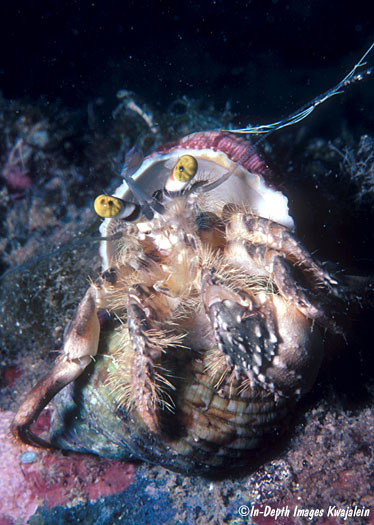
Dardanus deformis is a common species on various lagoon, pinnacle and seaward reefs. It is particularly common in lagoon patches of Halimeda algae on sand. It is one of the anemone hermits, forming a symbiotic relationship with the anemone Calliactis polypus, multiple individuals of which attach to and live on the mollusk shells inhabited by the hermits. The stinging cells of the anemone presumably protect the crab from predation by octopus, while the anemone in return receives mobility and potentially protection from slower anemone-eating predators such as the seastars Culcita novaeguineae and Acanthaster solaris. The partnership is important enough to both of the parties that when the hermit moves to a new shell, as it must do in order to grow, it will transfer the anemones from the old to its new shell. The anemones, which adhere so tightly to the shell that they are virtually impossible for a person to remove intact, will readily let go and allow themselves to be transferred by the crab. The large crab immediately below is in an approximately 70mm long Turbo shell.

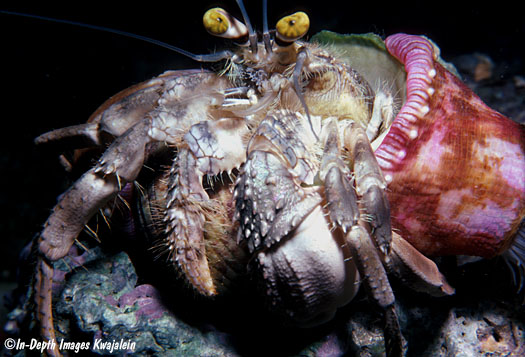
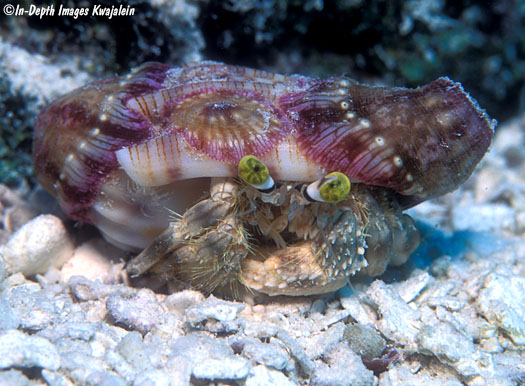
Anemones on the next two photos are another species, Sagartiomorphe carlgreni.
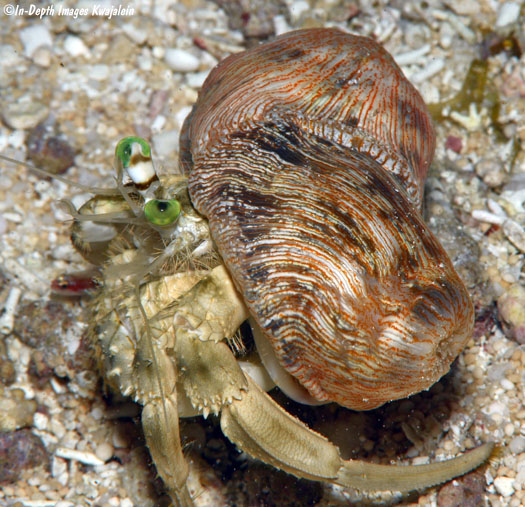
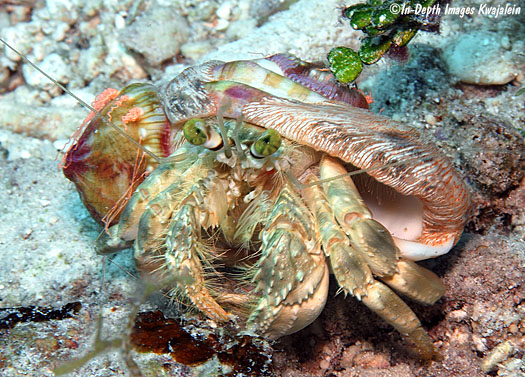
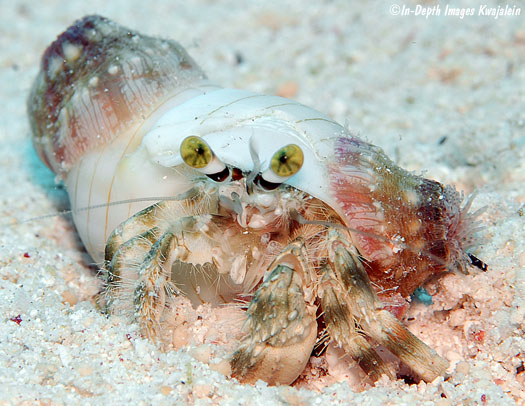
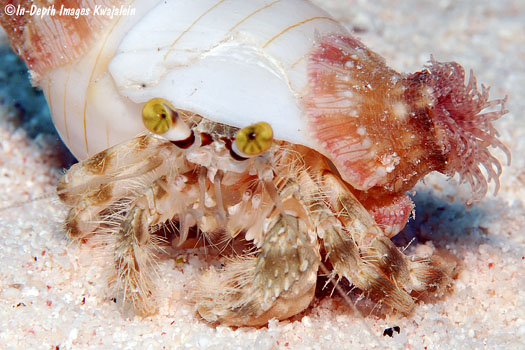
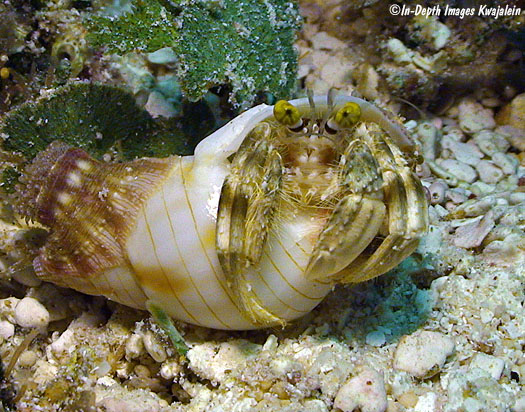
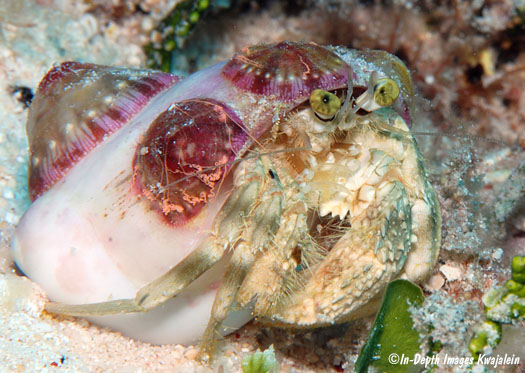
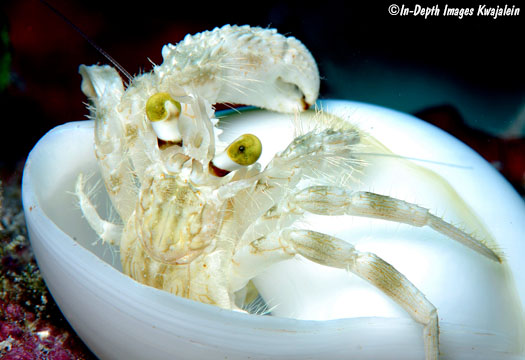
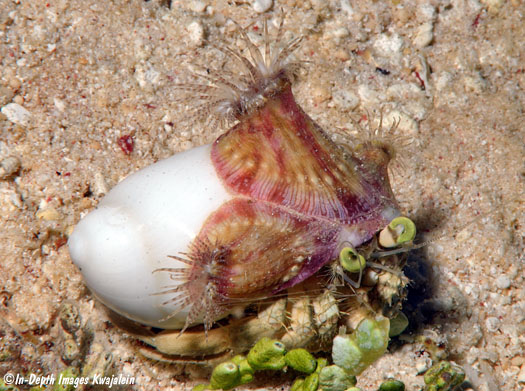
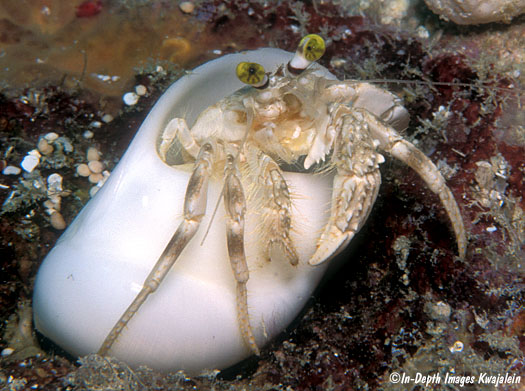
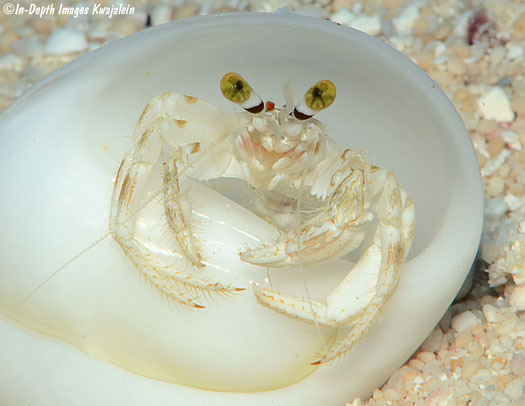 \
\
Close shot of the eyes.
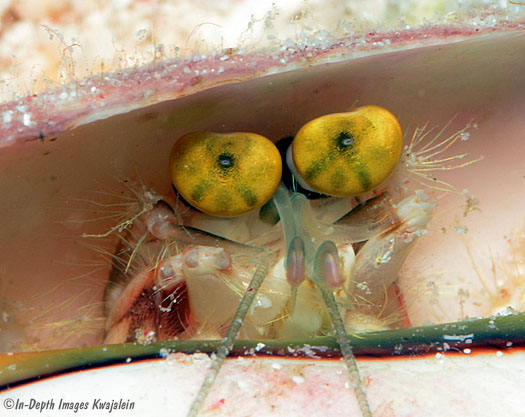
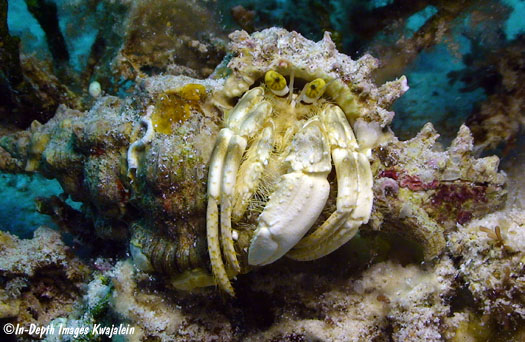
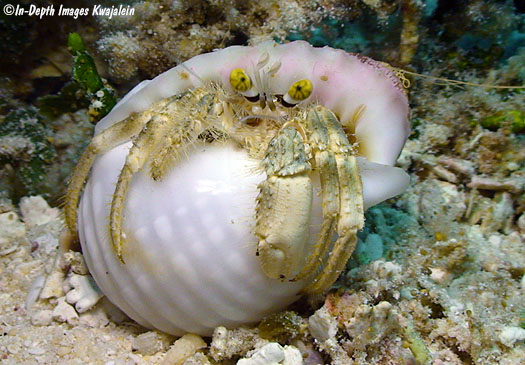
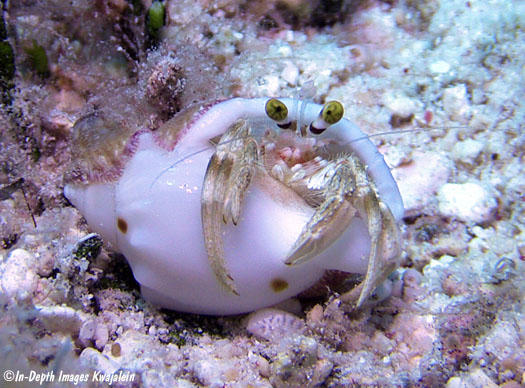
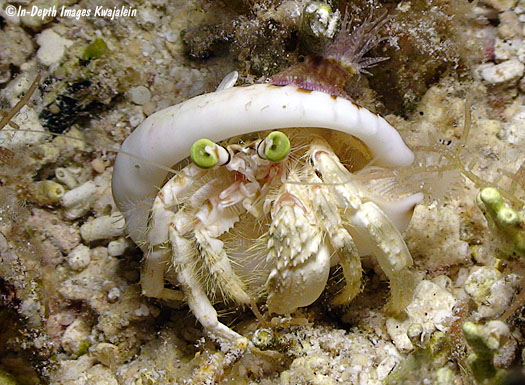
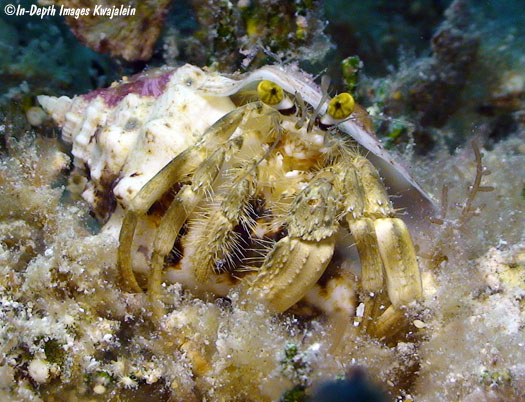
The one below momentarily vacated its shell, exposing its soft, curved abdomen, before slipping back inside.
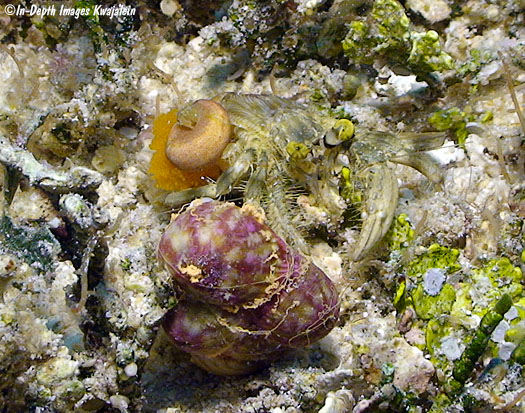
Created 10 August 2018
Updated 14 November 2020